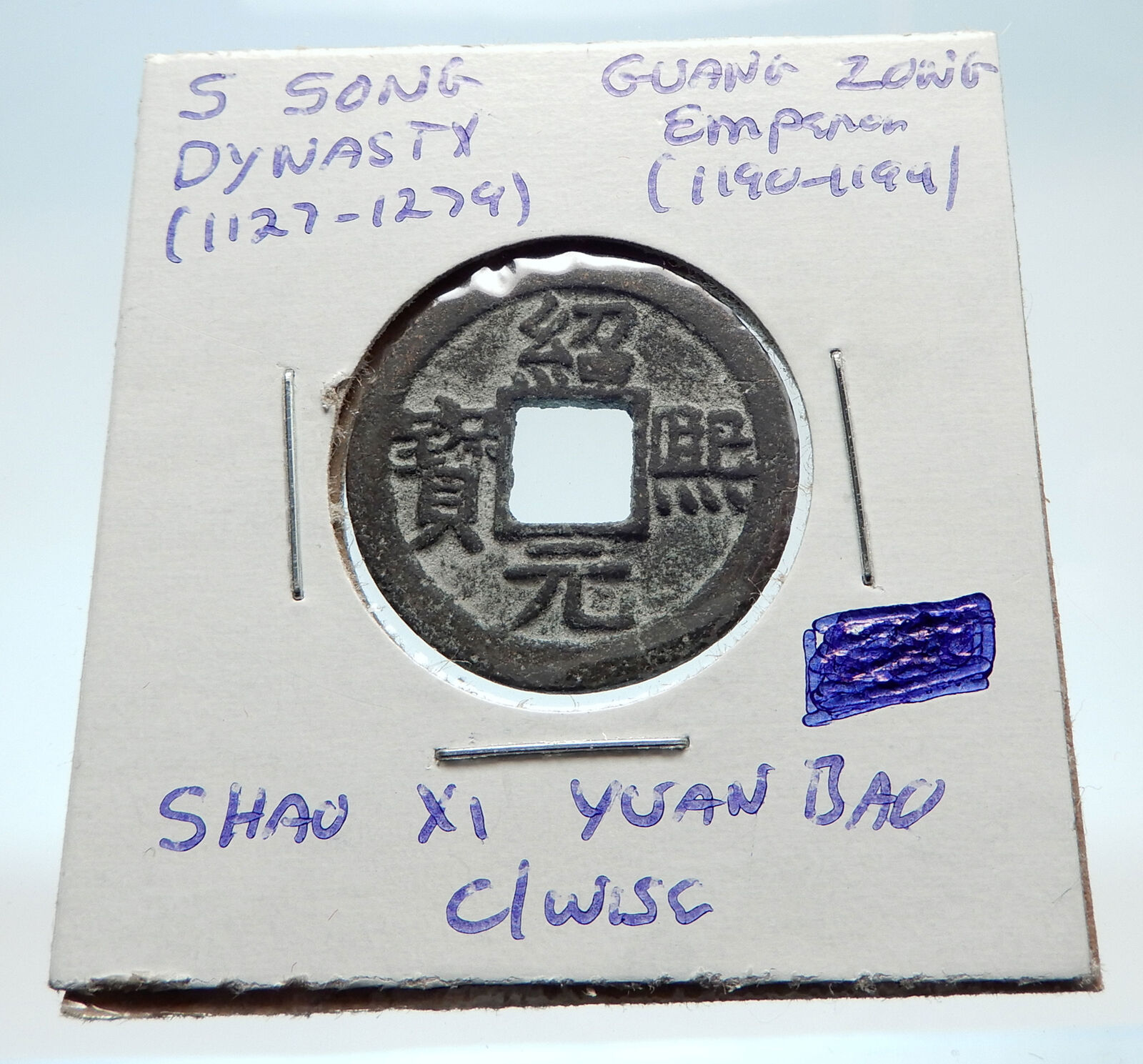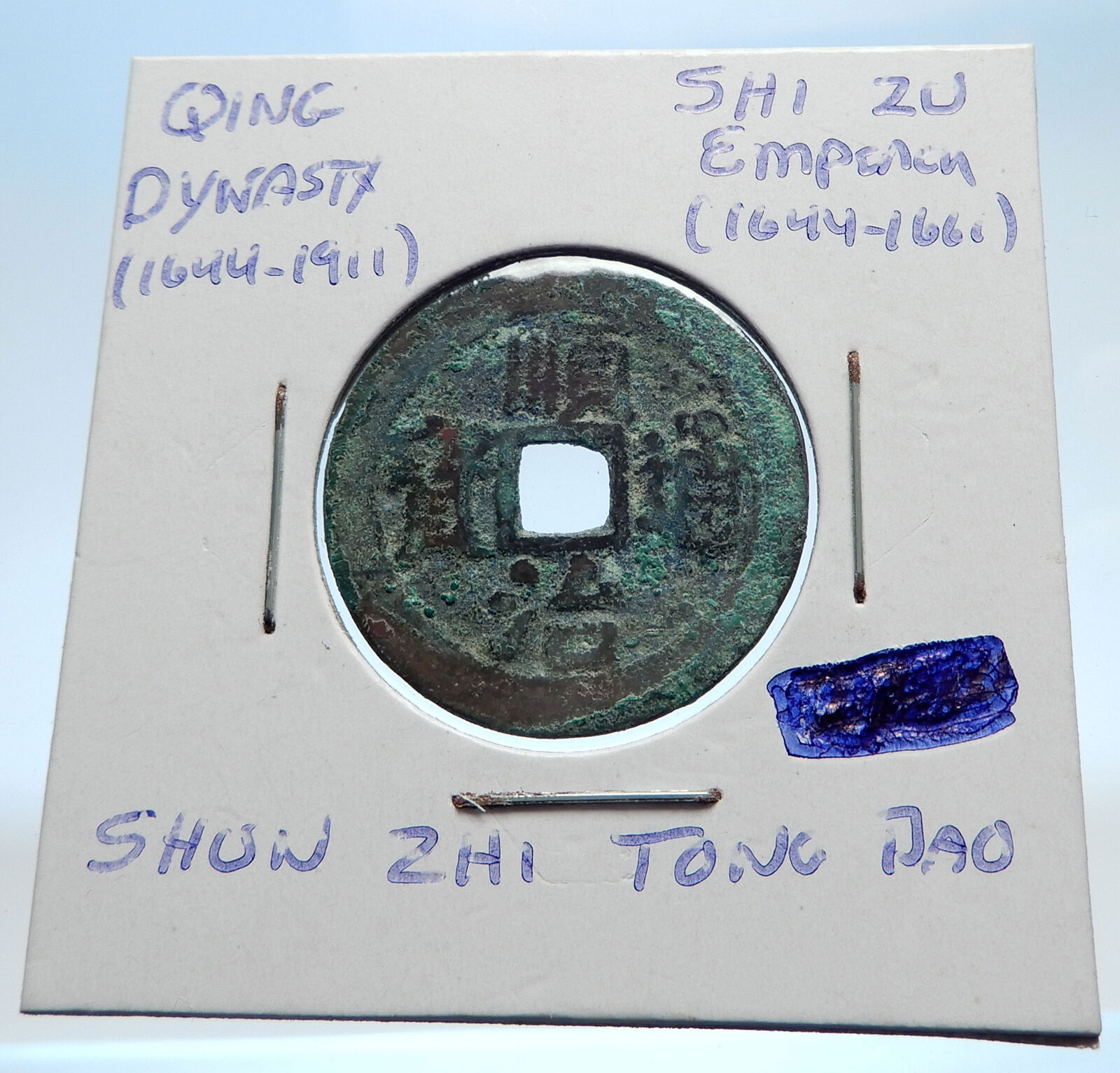|
China – WARRING STATES: Liang, 350-250 B.C.
Bronze Spade Money 50x31mm (8.67 grams) Cast circa 350-250 B.C.
A flat-handle, square-foot example
Reference: Hartill 3.226; Ding pg. 4.
Inscription reading LIANG in archaic script on the obverse.
the reverse blank.
You are bidding on the exact item pictured, provided with a Certificate of Authenticity and Lifetime Guarantee of Authenticity.
Liang (Chinese: 梁; pinyin: Liáng) was one of the states during the Spring and Autumn period of ancient China, bordering the State of Qin and was conquered by Duke Mu of Qin in 641 BCE. The rulers of Liang had the surname Ying (嬴). The capital of Liang was located south of modern City of Hancheng in Shaanxi.
In 703 BC, the rulers of the five states of Western Guo, Rui, Xun (荀國) and Jia (賈國), including the State of Liang, suppressed Duke Wu of Quwo using armed force.
In 654 BC, Prince Yiwu from the State of Jin escaped to Liang. The ruler of Liang (梁伯) betrothed his daughter Liang Ying (梁嬴) to Prince Yiwu.
In 642 BC, the ruler of Liang wanted to build a new capital but it was seized by the State of Qin after it was completed.
In 641 BC, Liang was conquered by the State of Qin. According to the Zuo Zhuan, the Liang people were not able to bear the work given to them by the ruler of Liang so that the State of Qin easily conquered Liang.
Liang is represented by the star Delta Ophiuchi in asterism Right Wall, Heavenly Market enclosure (see Chinese constellation).
 The Warring States period (simplified Chinese: 战国时代; traditional Chinese: 戰國時代; pinyin: Zhànguó Shídài) was an era in ancient Chinese history characterized by warfare, as well as bureaucratic and military reforms and consolidation. It followed the Spring and Autumn period and concluded with the Qin wars of conquest that saw the annexation of all other contender states, which ultimately led to the Qin state’s victory in 221 BC as the first unified Chinese empire, known as the Qin dynasty. The Warring States period (simplified Chinese: 战国时代; traditional Chinese: 戰國時代; pinyin: Zhànguó Shídài) was an era in ancient Chinese history characterized by warfare, as well as bureaucratic and military reforms and consolidation. It followed the Spring and Autumn period and concluded with the Qin wars of conquest that saw the annexation of all other contender states, which ultimately led to the Qin state’s victory in 221 BC as the first unified Chinese empire, known as the Qin dynasty.
Although different scholars point toward different dates ranging from 481 BC to 403 BC as the true beginning of the Warring States, Sima Qian’s choice of 475 BC is the most often cited. The Warring States era also overlaps with the second half of the Eastern Zhou dynasty, though the Chinese sovereign, known as the king of Zhou, ruled merely as a figurehead and served as a backdrop against the machinations of the warring states.
The “Warring States Period” derives its name from the Record of the Warring States, a work compiled early in the Han dynasty.
|





 The Warring States period (simplified Chinese: 战国时代; traditional Chinese: 戰國時代; pinyin: Zhànguó Shídài) was an era in ancient Chinese history characterized by warfare, as well as bureaucratic and military reforms and consolidation. It followed the Spring and Autumn period and concluded with the Qin wars of conquest that saw the annexation of all other contender states, which ultimately led to the Qin state’s victory in 221 BC as the first unified Chinese empire, known as the Qin dynasty.
The Warring States period (simplified Chinese: 战国时代; traditional Chinese: 戰國時代; pinyin: Zhànguó Shídài) was an era in ancient Chinese history characterized by warfare, as well as bureaucratic and military reforms and consolidation. It followed the Spring and Autumn period and concluded with the Qin wars of conquest that saw the annexation of all other contender states, which ultimately led to the Qin state’s victory in 221 BC as the first unified Chinese empire, known as the Qin dynasty.




